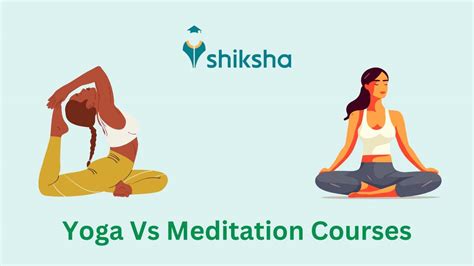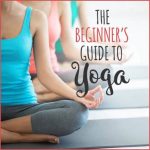Yoga vs. Meditation: Unraveling Key Differences and Synergies
Introduction
Yoga and meditation are ancient practices that promote well-being, often intertwined in discussions about mental and physical health. However, they serve different purposes, use distinct methods, and lead to unique outcomes. For individuals exploring these practices, it’s essential to understand not only their benefits but also how they diverge, overlap, and complement each other. In this article, we examine their origins, techniques, modern applications, ethical considerations, and practical uses.
By the end of this article, readers will have a well-rounded understanding of yoga and meditation. Whether you’re a beginner, expert, or practitioner, this guide aims to make the differences clear while also exploring synergies between the two.
Key Concepts
- Yoga: A holistic practice originating in ancient India, focusing on physical postures (asanas), breathing exercises (pranayama), and often integrating meditation.
- Meditation: A mental practice that involves training the mind for awareness, focus, or relaxation, often without any physical movement.
- Mind-body Connection: Both practices enhance the link between mental and physical well-being but in different ways.
- Spiritual vs. Secular Practices: Yoga often includes philosophical elements; meditation can be either spiritual or completely secular, such as mindfulness meditation.
Historical Context
Yoga’s Evolution: Emerging from the Vedic tradition, yoga was initially a spiritual discipline. Over time, various branches like Hatha Yoga developed, emphasizing physical postures.
Meditation’s Roots: While meditation also has roots in ancient India, it spread through multiple traditions such as Buddhism, Taoism, and even early Christianity. Each tradition adapted it to its spiritual or philosophical goals.
In the 20th century, yoga and meditation gained popularity in the West. However, their modern adaptations—like yoga as a fitness routine or mindfulness as a mental health tool—sometimes depart from traditional origins.
Current State Analysis
Yoga is now commonly associated with physical fitness, though many practices still incorporate breathwork and meditation. Classes often range from the intense pace of Vinyasa Yoga to the slow, restorative postures of Yin Yoga.
Meditation, on the other hand, has found its place in mental health interventions. Techniques like mindfulness-based stress reduction (MBSR) are employed to reduce anxiety, depression, and chronic pain.
The overlap can sometimes create confusion—does yoga require meditation, or does meditation need yoga? The answer depends on the practitioner’s goals, which will vary between mental clarity, spiritual growth, or physical health.
Practical Applications
- Yoga for Physical Health: Enhances flexibility, strength, and balance.
- Meditation for Mental Health: Improves focus, reduces stress, and enhances emotional regulation.
- Hybrid Approaches: Yoga Nidra combines meditation with relaxation. Mindful yoga sessions integrate breath awareness and meditation within physical practice.
Case Studies
| Case Study | Intervention | Outcome |
|---|---|---|
| Mindfulness in Schools | Meditation programs introduced to reduce anxiety and improve focus. | Students showed decreased stress levels and better academic performance. |
| Yoga for Chronic Pain | Regular yoga sessions provided to individuals with back pain. | Participants reported pain reduction and improved mobility. |
| Meditation in Workplace Settings | Mindfulness meditation workshops for corporate employees. | Improved job satisfaction and decreased burnout rates. |
Stakeholder Analysis
- Healthcare Providers: Use yoga and meditation as complementary therapies for patients with chronic conditions.
- Employers: Implement mindfulness programs to enhance productivity and employee well-being.
- Practitioners: Individuals may prefer yoga, meditation, or both depending on their health and personal goals.
Implementation Guidelines
- Identify Goals: Choose yoga for physical health, meditation for mental clarity, or both for overall well-being.
- Start Small: Beginners should start with short sessions, increasing gradually over time.
- Seek Guidance: Attend classes or use reliable online resources to ensure proper technique.
- Consistency is Key: Regular practice is essential for lasting benefits.
Ethical Considerations
Both yoga and meditation have spiritual roots, which raises concerns about cultural appropriation. Practitioners should engage respectfully, acknowledging the origins of these practices. Additionally, instructors need to ensure accessibility and inclusivity, offering modifications for individuals with disabilities or limitations.
Limitations and Future Research
While research supports the benefits of yoga and meditation, limitations exist. Some studies rely on self-reported data, which may be biased. Additionally, there is still limited understanding of long-term effects, especially for new adaptations like hot yoga or app-based meditation programs. Future research should explore the impact of these practices on different demographics and conditions, such as trauma recovery or neurodivergence.
Expert Commentary
Dr. Samantha Greene (Psychologist): “Meditation provides a much-needed mental reset, but it’s not a one-size-fits-all solution. Some individuals may struggle with certain techniques, and it’s essential to offer tailored approaches.”
Michael Jones (Yoga Instructor): “The physical benefits of yoga are undeniable, but its true essence lies in the connection between body and mind. As the practice becomes more mainstream, we must ensure it doesn’t lose its philosophical depth.”
Anna Patel (Mindfulness Coach): “Incorporating both yoga and meditation in daily life fosters a deeper connection with oneself. It’s not about choosing one over the other but finding a balance that works for you.”








